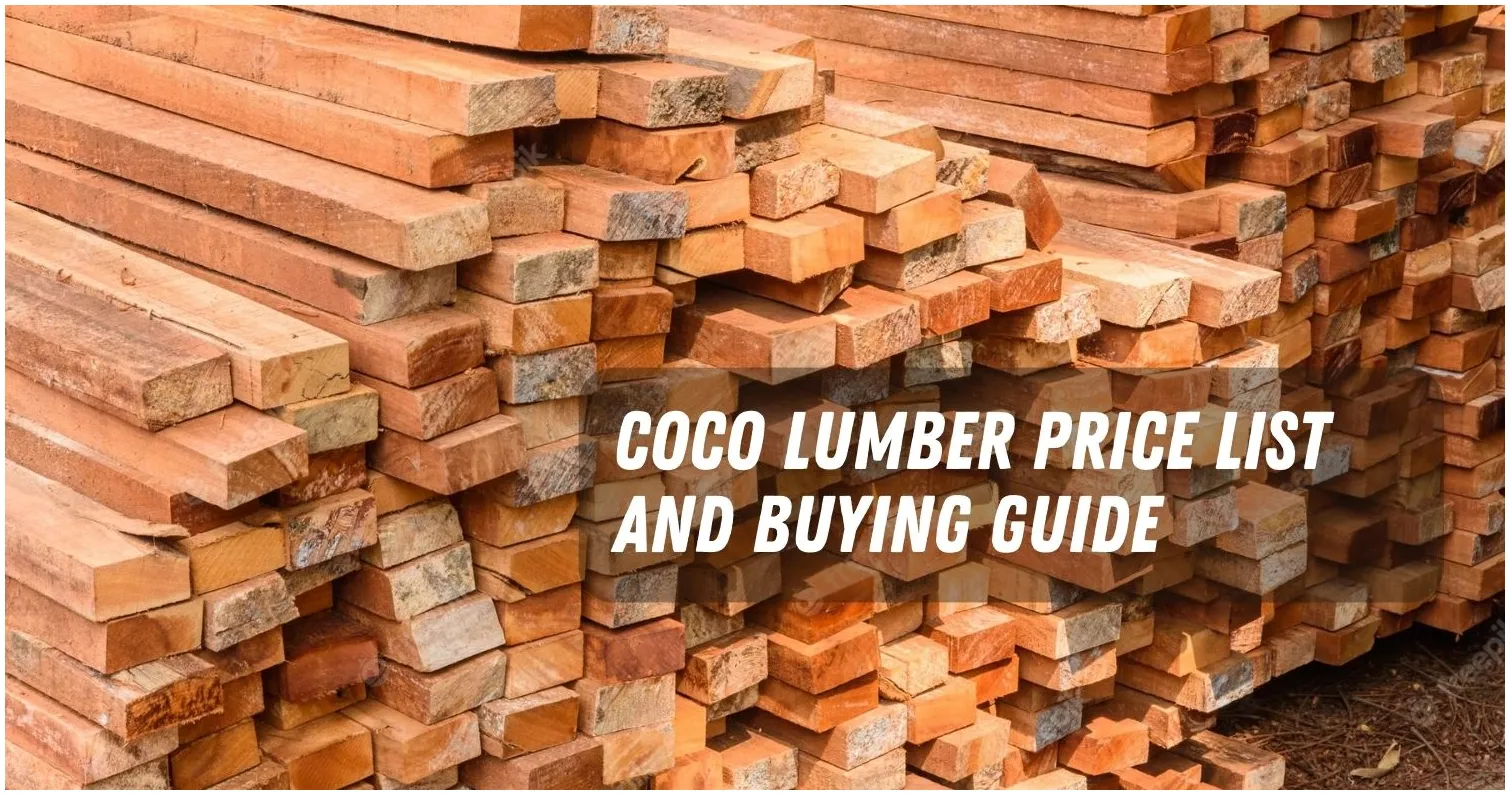If you are looking for a durable construction material with cheap price in the Philippines, you might want to consider coco lumber.
Coco lumber, also known as coconut wood, is derived from coconut trees that are no longer productive. It is a renewable and eco-friendly resource that can be used for various purposes.
So in this blog post, we will discuss what it is, its uses, its advantages and disadvantages, and also coco lumber price in the Philippines.
What is Coco Lumber?

Coco lumber is a type of wood that comes from coconut trees that have stopped making coconuts.
It is also called coco timber, coco wood, or red palm. It comes in different sizes and is easy to find on the market.
Coco lumber has different densities based on what part of the stem it comes from.
The outer part of the stem is good for structures that hold weight, while the inner part is better for structures that don’t.
It also has a natural brown color and a unique grain design that can be made even better by staining or painting.
Uses of Coco Lumber

Coco board can be used for a variety of things in building construction and furniture making, here some of it:
- Trusses: Coco lumber can be used to make the trusses that hold a building’s roof. It can support a lot of weight and is resistant to termites and fungus.
- Purlins: Coco lumber can be used to make the supports that hold up roofing materials like metal sheets or tiles just like C Purlins.
- Walls: Coco lumber can be used to make walls between rooms in a building.
- Joists: A building’s floor can be held up by joists made of coco lumber. With it the floor system will have strength and flexibility.
- Doors: Coco lumber can be used to make doors that provide entry to a building and keep it safe. It also can be altered to fit different sizes and styles.
- Window frames: Coco lumber can be used to make window frames that let in air and natural light.
- Roofing: Coco lumber can be used to make roofs for traditional or tropical homes. It’s strong enough to hold roof tiles or sheets, but it may rot faster in humid places.
- Jalousies: Coco lumber can be used to make jalousies, which can be used to control the airflow and light in a building. It can also give its occupants privacy and security.
- Furniture: Coco lumber can be used to make furniture like tables, chairs, cabinets, shelves, beds, etc.
- Novelty items: Coco logs can be used to make novelty items like walking sticks, ashtrays, plates, bowls, vases, and so on. It can make any product more creative and appealing.
Coco Lumber Price List

The price of coco lumber depends on various factors such as the size, quality, supply, demand, location, and season.
However, here are some average prices of coco lumber in the Philippines:
| Coco Lumber Size | Price |
|---|---|
| 2″ x 2″ x 8′ | ₱86 |
| 2″ x 2″ x 10′ | ₱105 |
| 2″ x 3″ x 8′ | ₱125 |
| 2″ x 3″ x 10′ | ₱156 |
| 2″ x 3″ x 12′ | ₱200 |
| 2″ x 4″ x 12′ | ₱250 |
| 2″ x 6″ x 12′ | ₱263 |
These prices are subject to change without prior notice depending on market conditions.
Advantages and Disadvantages of Coco Lumber

Before using it for your job, you should think about the pros and cons of coco lumber.
Pros:
- Affordability: Compared to other types of wood, coco board is cheap and cost-effective.
- Straight: Coco board has a straight shape, which makes it easy to use for building without any special changes.
- Because there are so many coconut trees, coco lumber is easy to find in many countries.
- Coco board is versatile because it can be used for different things, sizes and shapes.
- Attractive Look: Coco lumber has a unique grain pattern and a natural brown color that make projects look nice.
Cons:
- Size Limits: Because coco lumber has a small width, its size and thickness are limited.
- Cracking: Coco lumber is prone to cracking and splitting, even before it is built. So this could be a problem for buildings that hold weight.
- Coco lumber is very dense and hard, so it can be hard to nail or screw.
- Mold and stains can grow on coco lumber if it is not dried and treated properly.
Things You Should Know about Coco Lumber
If you are planning to use coco lumber for your project, here are some things you should know about it:
- Is Coco wood good for building? Yes, Coco lumber is often used in building for scaffolding, form lumber, house posts, girders, trusses, and more.
- What makes Coco lumber different from good oak? Coco lumber is usually used for temporary structures like formworks and scaffolding, while good lumber is used for lasting structures like trusses and floor decking.
- Can you use Coco wood to make floors? Yes, high-quality flooring can be made from Coco lumber’s stem fibers because they are more dense.
- Is Coco lumber safe from termites? If you don’t treat coco lumber, termites will eat it because it has a lot of wetness and a soft center.
- How long will the Coco wood last? The life span of coco logs is unknown, but once it gets wet, it may last up to four years before pests start to live in it.
- How strong is the wood from Coco? Coco lumber is harder than oak and Douglas-fir. Its Janka ball hardness ranges from 112.5 to 154.7 kgf/cm2, which is higher than both of those.
We hope this blog post has given you some useful information about coco lumber price in Philippines and its features.
If you have any questions or comments, please feel free to leave them below. Thank you for reading!
[ratings]

